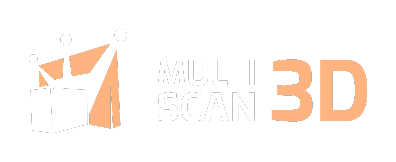Technological Challenges
The enforcement vision of customs increasingly sees container inspection as an integral and fully automated part of the logistic flow, especially in high-throughput seaports such as Rotterdam or Antwerp.
The existing techniques propose 2D image, the breakthrough is to propose a 3D system. Currently in use 2D system suffers from a lack of both spatial resolution and material discrimination capability. The projective nature of the images captured by those systems requires that the customs analysts must proceed in a human-mind 3D reconstruction which can be difficult or even impossible in case of complex loading. X-ray cargo inspection has not changed much, in principle, since the start, in the 90s. The inherent limits of planar radiography only allow incremental evolutions and the improvements which it may bring, will remain reduced even if useful for the users.
These limits of radiography mean that today, customs organizations and other authorities need additional technologies in separate set-ups to fully inspect containers. They require solutions that combine effective threat detection with efficient interplay with operational constraints. That is why they inquire for alternatives to X-rays, capable of providing more precise information, for example, on the content of hermetically sealed containers.
Thus, MULTISCAN 3D consortium ambitions to achieve a real technological breakthrough in the NII scanning systems both in terms of application allowed by the used of laser-plasma source for tomography 3D, then in each technological block in terms of progresses beyond the state of the art from an R&D point of view.
The existing techniques propose 2D image, the breakthrough is to propose a 3D system. Currently in use 2D system suffers from a lack of both spatial resolution and material discrimination capability. The projective nature of the images captured by those systems requires that the customs analysts must proceed in a human-mind 3D reconstruction which can be difficult or even impossible in case of complex loading. X-ray cargo inspection has not changed much, in principle, since the start, in the 90s. The inherent limits of planar radiography only allow incremental evolutions and the improvements which it may bring, will remain reduced even if useful for the users.
These limits of radiography mean that today, customs organizations and other authorities need additional technologies in separate set-ups to fully inspect containers. They require solutions that combine effective threat detection with efficient interplay with operational constraints. That is why they inquire for alternatives to X-rays, capable of providing more precise information, for example, on the content of hermetically sealed containers.
Thus, MULTISCAN 3D consortium ambitions to achieve a real technological breakthrough in the NII scanning systems both in terms of application allowed by the used of laser-plasma source for tomography 3D, then in each technological block in terms of progresses beyond the state of the art from an R&D point of view.
